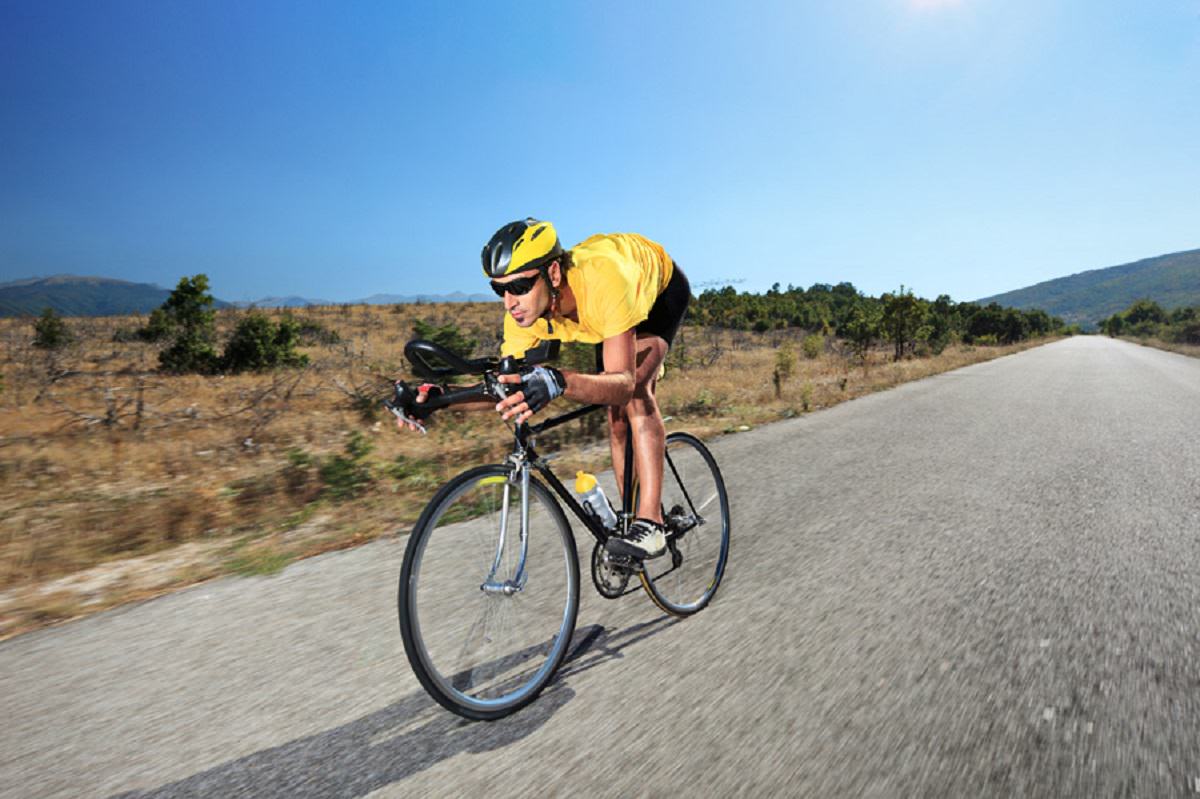Historically, in 2008, a German named Gunter Mai surprised the entire cycling world by manufacturing the lightest road bike ever, weighing just under 3.2 kg. In his succeeding model, he brought its weight down to roughly 2.8kg. And Mai reportedly logged over 20,000km on the bike in its first two years. Since then, lightweight road bikes have been built by different companies with a weight down to 2.7 kg!

You can build your lightweight road bike. Hold On! Before you begin, you need to know the following things:
How To Choose Frame and Wheels for the Lightest Road Bike Ever
If you want to build your lightweight bike, you must choose the most appropriate frame from the beginning. Ask yourself a few questions below to figure out what frame will be right for you.
Are you
- Concerned only about improving fitness (medium to long rides)?
- Interested only in touring?
- Particularly training for an event?
- Planning to get into road racing or triathlon?
- Only thinking of commuting to work/around town?
You don’t have to worry about the UCI weight limit unless you plan to take part in some road racing competition.
If you’re looking for a high-performance bike that’s lightweight and durable, check out our list of the best carbon road bikes.
1. The Frame And Fork Materials
Bike frames today are made of one or a combo of these four materials: steel, aluminum, titanium, and carbon fiber (carbon). The frame weight matters a lot while building a light bike. Check out their differences below.
1. Steel
Steel has been used by frame builders for more than a century. There are different kinds of steel tubing that you can bend easily into any shape. Steel material offers durability, and great ride quality is affordable, and is easily repaired.
Well-known quality steel for bicycle frames is American SAE 4130 steel, which is popularly known as “chrome molybdenum,” or simply called “Chromoly” or “chrome-moly.” Steel is also a great fork material because it can be formed into any shape, even aero ones. And its strength is unparalleled.
Steel frames will offer you comfort and pleasure as it is strong enough to absorb shock while riding on rough roads. Steel forks are heavier than those made from lighter materials such as aluminum and carbon.
2. Aluminum
According to reports, Aluminum was first utilized in frame construction in 1895. But it wasn’t until the 1980s that it received wide recognition when it was used to produce tubing with large diameters. Since then it has become the most popular of all frame materials. If your lightest bike’s frame is manufactured with Aluminum, you will get better construction and higher-quality tubing.
The new features like new aluminum alloys, hydroforming, and tubing enhancements allow the Aluminum frames to absorb shock while enjoying a pleasurable ride.
Some commonest types of Aluminum tubing used by manufacturers are 7005 6061 and 7005, containing other elements as alloys, such as magnesium, zinc, and silicon and zinc. There are some ultra-light tube sets like scandium. Aluminum forks are said to be light and stiff and light: they could be shaped aerodynamically. They are known to provide good vibration damping for you to enjoy a good ride.
3. Titanium
For the lightest road bikes’ frames, Titanium, referred to as “ti” has been one of the lightest, longest lasting but most expensive frame materials. It competes with aluminum in weight, and it is generally as comfortable as steel.
You will feel the frames are very light and vibrant. The two commonest examples of titanium are 6A1/4V and 3Al/2.5V. These expressions reveal the amount of aluminum (Al) and vanadium (V) alloys used in titanium.
It is believed that 6Al/4V is lighter, more expensive, stronger, and harder to machine. Titanium forks are rare and they are very expensive because they require additional material and construction.
4. Carbon Fiber
Carbon fiber which is also referred to as “graphite”, “carbon” or “composite” is very special because it is not a metal. Frames manufactured from carbon fiber are extremely light, durable, and stiff.
The greatest merits of graphite are that they can be molded into different shapes and they possess unbelievable lightness with great rigidity which aids absolute pedaling efficiency and incomparable comfort. Carbon is not affected by corrosion and it has a shining property. Carbon frames are expensive. I prefer carbon forks because of their lightness and their natural ability to absorb shocks.
When I built my road bike, I chose a carbon fiber frame to keep it lightweight. The frame was super lightweight and extremely stiff, allowing an easy power transfer. On the longer rides, I noticed that the carbon frame had a better absorption capacity. This feature was my absolute favorite because it made my longer rides more comfortable.
If you’re trying to decide between a titanium or carbon fiber bike, read our comparison guide to help you make an informed decision.
2. Selecting Wheels and Tires
To enjoy riding your lightest bike, it must be fitted with the right wheels and tires.
Compare prices on 100+ road bike wheels (+ reviews!)
1. Box-Section or Aero-Section Rims
You can go for either a box-section or an aero-section rim. The main differences are that the box section is square or rectagonal in shape and it is light, accelerates quickly, and offers the most comfort.
On the other hand, the Aero-section is triangular, less comfortable because of its stiffness, has less wind drag and its rims are stronger. Selecting the most appropriate wheel also goes with your weight.
If you are a 140-pound rider who enjoys spinning on rough roads, the box-section rim will be the best bet for you. Super-light wheels are great for climbing. But Aero wheels are normally a little heavier and may be suitable for the lightest road bikes.
In my opinion, the box-section rims offer a much more comfortable and smoother ride. You will require less effort to maintain a higher speed. Not to forget the aero-dynamic advantage that you will have.
If you’re new to cycling or looking for an affordable option, take a look at our list of the best entry-level road bikes.
2. About 650c Wheels
You will discover that some time-trial bikes, smaller models, and compact ones are equipped with 650c wheels, which are generally smaller in diameter than 700s. These tires are slightly stronger and a little lighter. They run quite faster than standard 700c wheels.
But one important fact you must understand is that 650c wheels sometimes ride a bit rougher by slightly dropping tire pressure. They dramatically lose momentum as they run a bit faster and cover less distance per tire revolution. So, if you’re going to choose the one that will fit your lightest bike, make sure to test ride either of them to feel the differences yourself.
Upgrade your ride with our list of the best carbon road bike wheels.
3. Tubeless And Tubular Tires
Even though most road bicycles have tires known as clinchers, which have tubes inside them, a great number of new tires are tubeless. For clinchers, the tires are held on the wheel with a mechanical fit as the tire beads literarily clinch the rim.
Tubeless tires run without tubes, a condition that removes pinch flats, seriously improves ride quality and saves a little weight. But they require a particular rim: so, bikes’ wheels that have tubeless-compatible rims will accept tubeless tires.
The reason for this is that for tubeless tires the tire and rim fit together with an airtight bead lock. And no holes are available inside the rims. At this moment, tubeless tires are only found in a few models. Their lightness may make them popular among riders shortly.
Before tubeless tires were invented, tubular tires were very common among the professional road racing communities, because they have a round structure that provides a smoother ride than the standard “clincher” tires. This round profile comes from the tubular casing that was sewn together at the bottom.
Tubulars are sown pieces of tubes, and they are always put inside the standard tires. Apart from the smoother ride, tubular wheels, and tires are usually lighter than the standard models.
But they aren’t common on our road bikes because of the headache involved in fixing flat tires; it is very cumbersome to repair either. However, if you’re racing or going for training, you might give tubular a try.
How To Choose The Best Tires For Lightweight Bikes
A typical road bike tire is good for 1,000 to 2,000 miles, depending on your riding style, weight, riding style, and the location of the tire, front or back. You can decide to use a bead type: Beads are placed on both edges of the tire. These are the parts that grip the rim to hold the tire on the wheel while riding.
Or you can go for less-expensive tires that use wire beads, which will add some weight to your bike. Better models of road bike tires have Kevlar (which is a super-tough fabric) beads, and these tires are referred to as folding tires. Pay attention to your tires’ width and diameter, because well-fitting tires will guarantee better bike handling, durability, and rolling resistance.
You’ll discover the tire’s size is written on its sidewall in this designation: 700 x XXc. where XX is the tire width in millimeters and 700 expresses its nominal outside-tire diameter in millimeters. European standard designates it as 700c.
The chart below shows the comparisons of different road bike tire sizes:
| 700 x 20c | thin, mainly for time trails and lighter rides |
| 700 x 23c | normal, OK for most conditions, racing or training |
| 700 x 25c | thicker, has longer wearing, good shock absorption |
| 700 x 28c | thick, last longest, nice for touring, commuting, or heavy riders |
1. Wide Vs Narrow Tires
Here are some important things you should know when selecting the right width for your road bike tires:
| Purpose | Wide Tires (25-28 mm) | Narrow Tires (20-23 mm) |
|---|---|---|
| Training with extra traction and comfort | ✔ | |
| Commuting | ✔ Prevent pinch flats ✔ Save rims from damage ✔ Reduce rolling resistance ✔ Guarantee a smooth ride on roads |
|
| Maximum grip on roads | ✔ | |
| Going fast | ✔ Good choice for riders who want to go fast | |
| Less rolling resistance at higher pressure | ✔ Less rolling resistance when running at higher pressure | |
| Training and racing | ✔ Especially the 23 mm ones | ✔ Good choice for training and racing |
| Fast, lightweight, maximum comfort (20 mm) | ✔ Maximum comfort | ✔ Fast, lightweight, maximum comfort |
2. Consider The Threads Per Inch (TPI)
Here is the secret: the more the TPI for your road bike’s tires, the suppler and thinner its sidewall will be, and the lighter the tire. So a tire with over 100 TPI is puncture-resistant good for fast riding and can run at higher pressures. On the other hand, low-thread count tires, with TPI less than 100, are economical and durable and they are heavier with thicker sidewalls.
3. What Are Bead Tires?
The bead is described as the portion of the tire that makes it stay stuck to the rim. This is done by a thin cord of woven steel or aramid fiber which is located around the inner circumference on both sides of the tire and holds the tire firmly to the rims.
There are typically two types of bead tires, Folding bead tires and wire bed tires. Folding bead tires are foldable, used for racing, lighter than wire beads, more expensive, and harder to mount when they are new. On the other hand, wire bead tires are usually less expensive, good for training bikes, easier to mount, and maintain their shape even when not mounted.
If you’re looking for the best wheels for your road bike, check out our comprehensive guide.
4. Tread Compounds Also Matter
Tread compounds are organic substances put in tires to make them firmer while running on the roads. Examples of these tread compounds include butyl rubber, carbon black compounds, silica and other synthetic compounds, and other additives. All these tread compounds encourage good traction, durability, and great firmness so that your bike tire can stay on the roads and not skid off.
FAQs
Are Lighter Road Bikes Better?
Yes, lighter road bikes are better. They offer better acceleration, increased agility, and better assistance in climbing. However, a lot of these benefits depend upon your riding style. Some people may not find these advantages appealing because of their preferences.
Are Lighter Bikes Easier To Climb?
Yes, generally lighter bikes are easier to climb because of their lightweight. While pedaling upwards, the weight makes a huge difference. The more the weight, the more effort will be required to maintain the momentum of the bike. Reduced weight means a better power-to-weight ratio, thus making it easier to climb with less effort.
Recap
By now, you know the different types of frames and wheels for your lightest road bikes. The best way to build a lightweight road bike is you choose the lightest materials: lightest frame, lightest wheels, etc.
Another thing to keep in mind is the brake. The types of brakes that you choose also make a huge difference. Disc brakes are a little heavier than rim brakes, so disc brake-equipped bikes will be heavier.
Also Read
- Road Bikes vs. Mountain Bikes: Which Is The Perfect One For You?
- Road Bikes vs Hybrids: Which One Is Best For Riding?
- How To Find The Best Entry Level Road Bike On A Budget
Should you have any questions or require further clarification on the topic, please feel free to connect with our expert author Jerry O by leaving a comment below. We value your engagement and are here to assist you.




